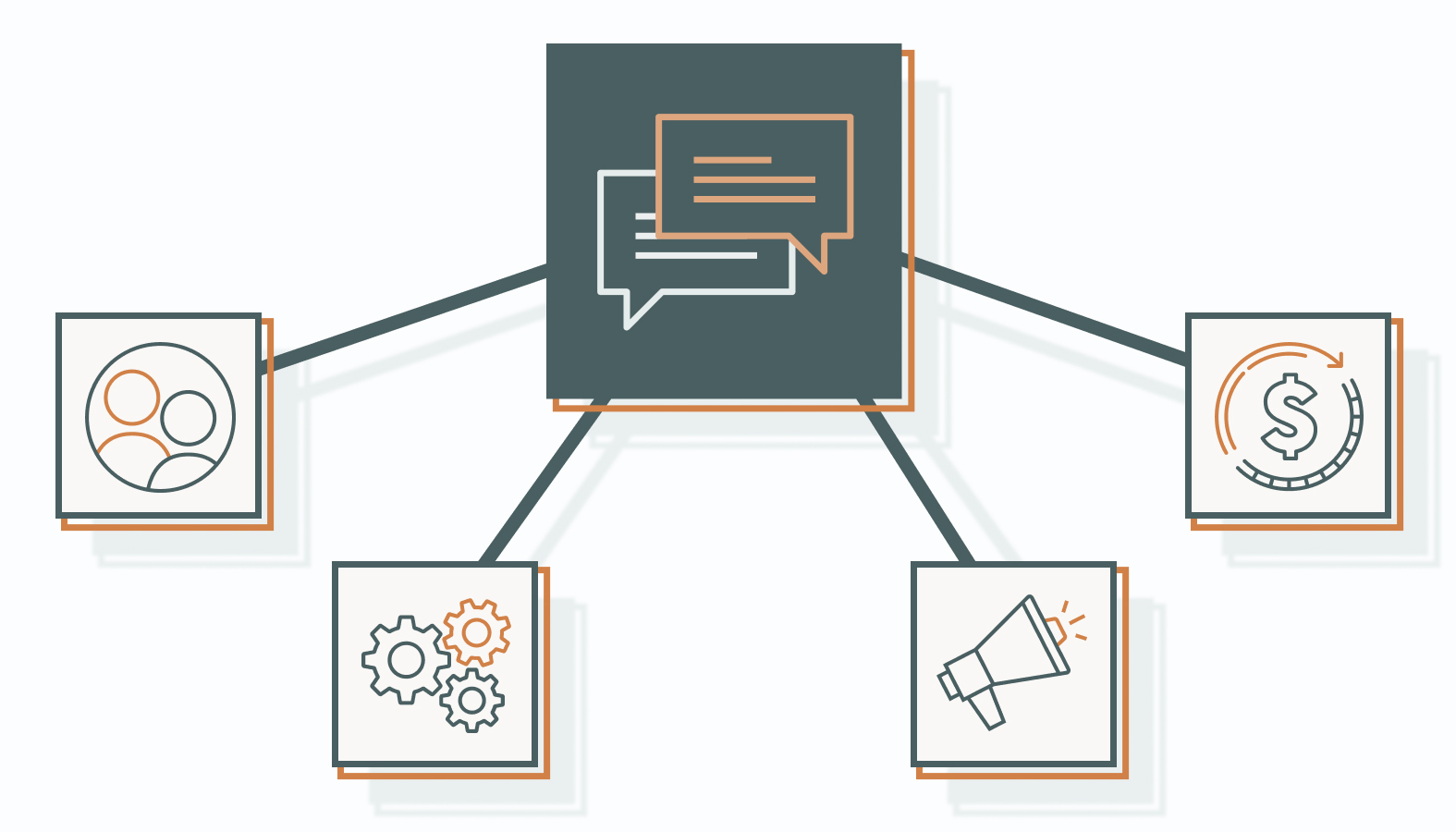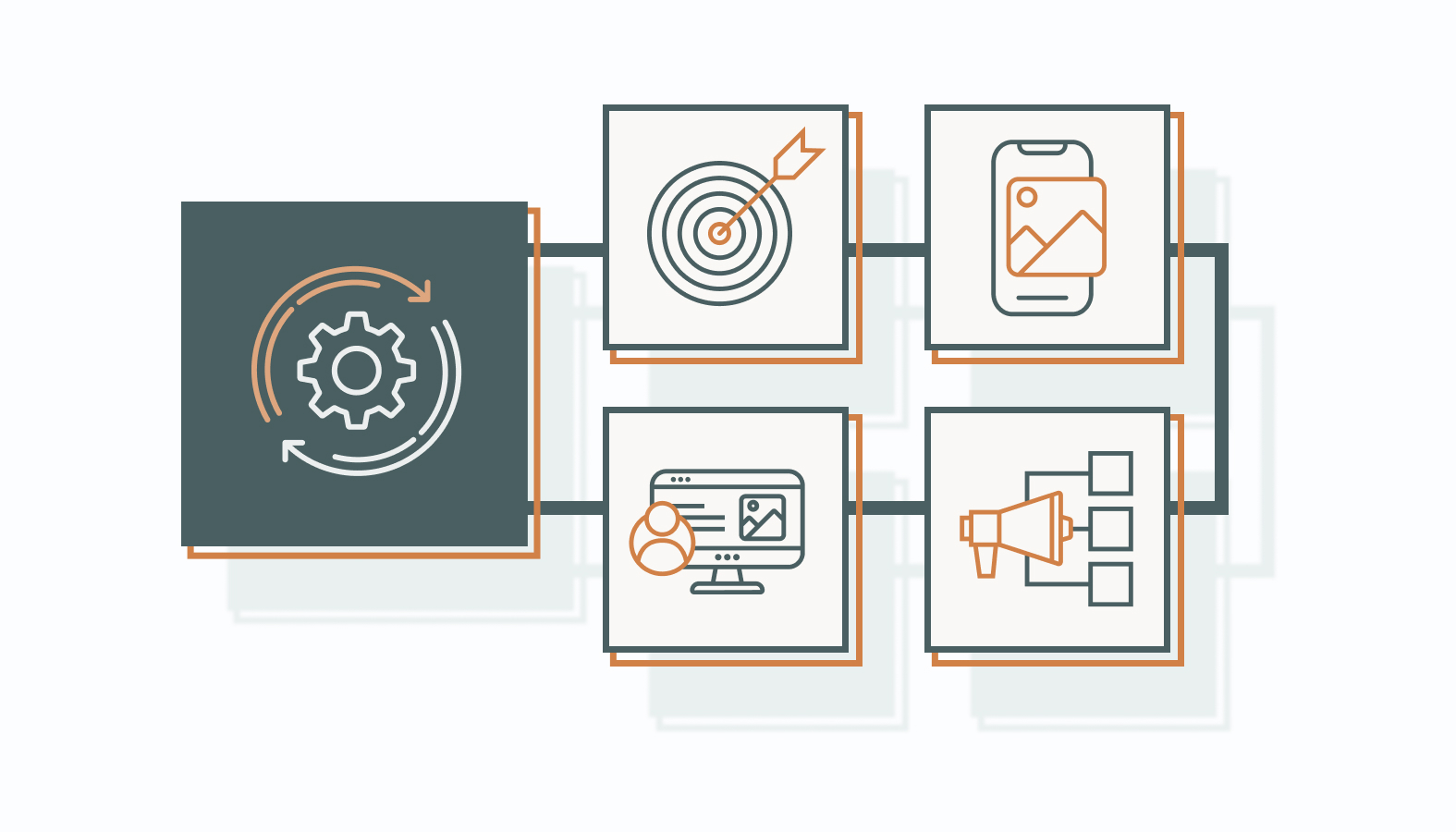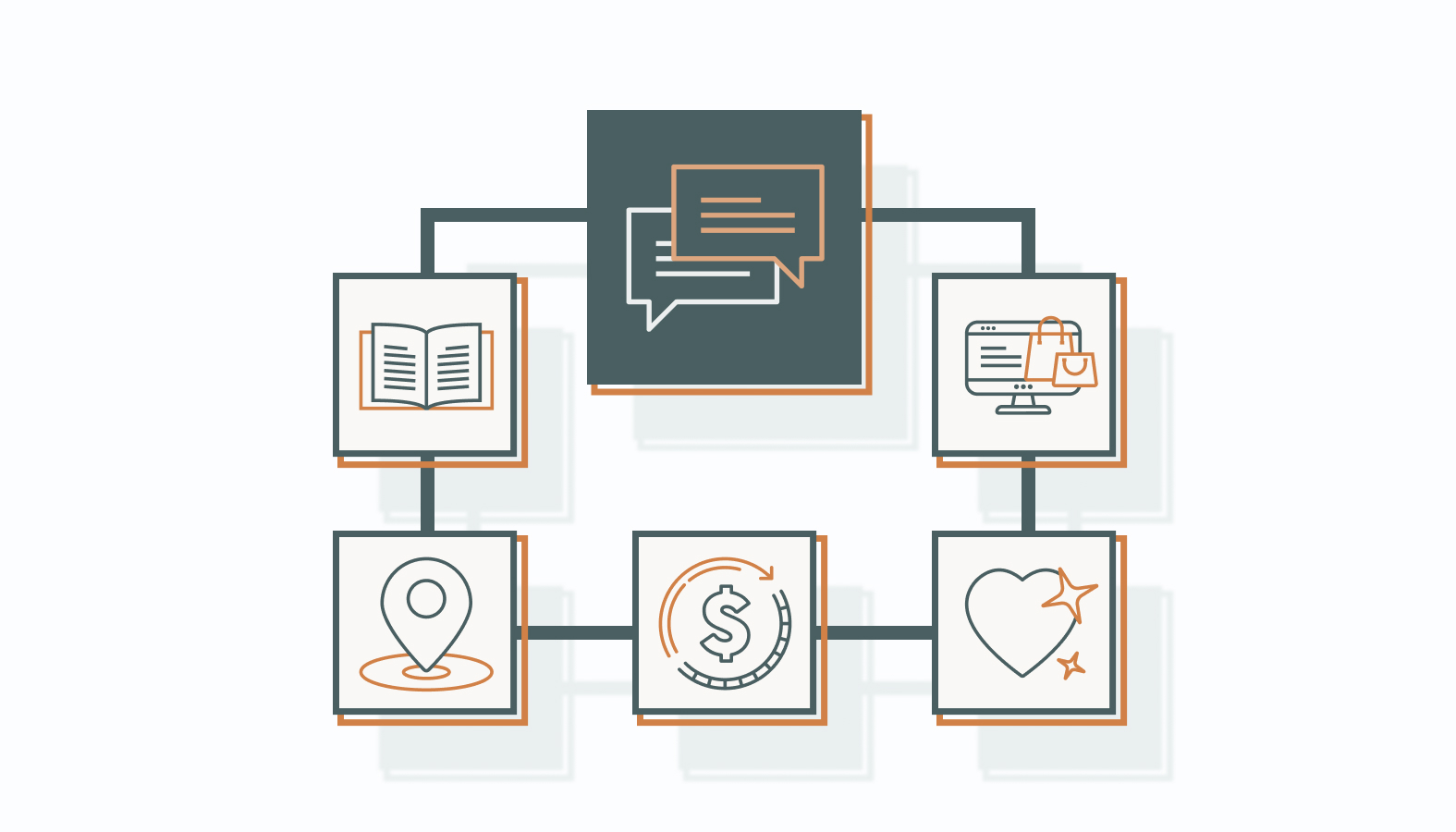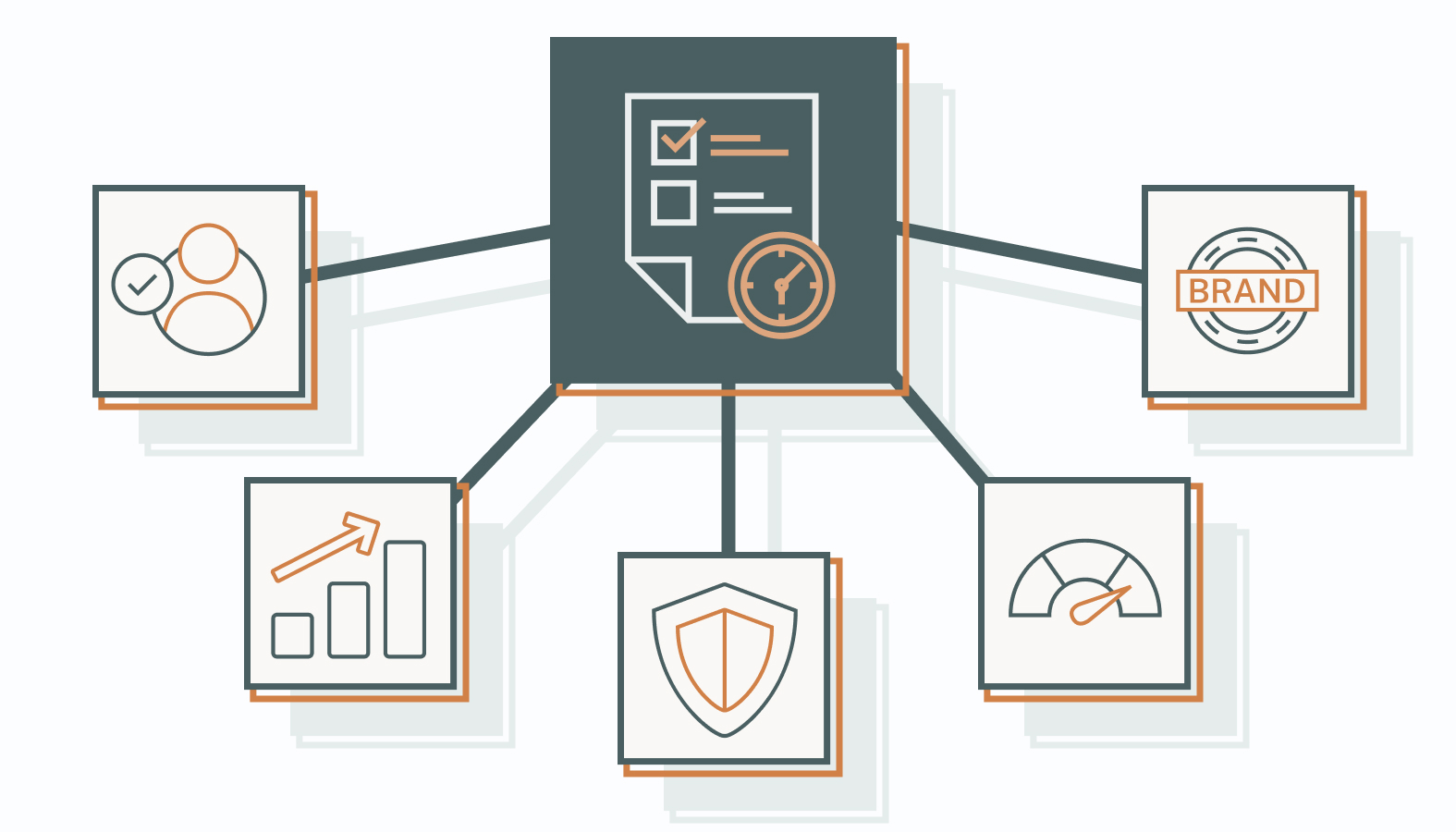Chatbots in marketing have moved far beyond the “futuristic gadget” phase. They’re now the tireless players behind smarter, faster, and more personalized customer experiences.
From answering questions instantly to guiding buyers toward informed decisions, they transform static touchpoints into meaningful conversations that drive results.
Yet, plenty of brands still hesitate, worried about sounding robotic or losing that human spark. The smarter approach sees chatbots as strategic extensions of your marketing team: tools that amplify your reach, speed, and consistency without diluting your brand voice.
When designed with intent, they don’t replace people; they make your team look unstoppable.
Curious how these AI-driven assistants are reshaping engagement and driving real results? Let’s break it down.
What Chatbots Really Do (and Why Marketers Can’t Ignore Them)
At their core, chatbots are intelligent software systems built to hold natural, real-time conversations with people. They live on websites, messaging apps, and social platforms, acting as digital concierges who keep users moving through their journey without the wait.
In marketing, their success lies in how well they match today’s customer expectations: fast, contextual, and frictionless. Chatbots deliver exactly that: meeting demand at scale while keeping each exchange relevant and on-brand.
The real power, though, goes beyond convenience. Every interaction generates insights that help marketers refine messaging, personalize offers, and design smarter campaigns. Chatbots don’t just talk; they listen, learn, and optimize your entire marketing strategy.
In a digital landscape that moves faster than ever, chatbots have become indispensable allies, helping brands stay ahead, maintain consistency, and keep audiences engaged on their terms.
Benefits of Chatbots in Marketing
Chatbots are quietly rewriting the rules of modern customer interaction. They keep engagement active, operations smooth, and responses instant without breaking a sweat.
Enhancing Customer Engagement
Chatbots turn conversations into experiences. They analyze behavior, track preferences, and respond with contextually relevant suggestions that make interactions feel tailored rather than scripted.
Any brand can use a chatbot to recommend products based on previous purchases, creating a shopping experience that feels personal at scale. Brands like Sephora have leveraged this approach, delivering advice and tutorials that keep customers coming back.
Streamlining Operations
Handling repetitive tasks is what chatbots do best. Order updates, FAQ responses, and appointment bookings happen automatically, letting human teams focus on more complex or creative challenges.
H&M, for example, uses chatbots to manage inquiries about product availability and shipping, dramatically reducing response times and operational friction.
Expanding Reach and Availability
Time zones aren’t a problem when chatbots are on duty. They deliver 24/7 support, making global engagement effortless.
Airlines like KLM use chatbots to provide real-time booking assistance and travel information to customers worldwide, maintaining consistent service without expanding staff.
Cost-Effective Customer Support
By efficiently handling high volumes of inquiries, chatbots reduce support costs while maintaining quality.
Integrating them with CRM systems and continuously refining their capabilities ensures they handle increasingly complex queries, just as Bank of America does, keeping customers satisfied while optimizing resources.
How to Develop a Chatbot Marketing Strategy
Building a chatbot is about architecting an experience that meets your goal.
A smart chatbot marketing strategy ensures every interaction serves a clear purpose, ties into your larger marketing ecosystem, and elevates your brand’s presence across every channel. Here’s how to implement it:
1) Set Clear Objectives
Every great build starts with a blueprint. Before your chatbot ever says “Hi,” define what success looks like.
Are you driving conversions?
Streamlining lead capture?
Reducing response time?
Clear objectives shape both the tone and functionality of your chatbot, ensuring it performs like part of your team (not a side project).
When aligned with broader business goals, your chatbot becomes more than a marketing tool; it becomes a measurable driver of ROI, customer satisfaction, and brand loyalty.
2) Choose the Right Platform
Not all platforms are created equal, and neither are audiences.
Choosing where your chatbot lives is a strategic decision that can amplify or limit its reach. Platforms like Facebook Messenger, WhatsApp, or your own website each have their strengths, depending on where your audience spends time.
Want something custom? A proprietary build gives you total creative control, but it comes with higher development and integration demands. The key is to match platform potential with your marketing ambitions, not the other way around.
3) Integrate with Existing Marketing Tools
Your chatbot shouldn’t operate in isolation. It should sync seamlessly with your marketing stack. Integration with CRM, analytics, and automation platforms turns simple conversations into actionable insights.
Imagine a chatbot that not only responds to customer questions but also updates your Salesforce data, triggers personalized email campaigns, or feeds engagement metrics into your analytics dashboard. That’s automation and marketing intelligence at work.
4) Design User-Friendly Interfaces
No one likes talking to a machine that feels mechanical. A well-designed interface bridges that gap between function and personality. Keep language natural, navigation effortless, and responses quick because user experience determines whether people stay engaged or bounce away.
Prototype. Test. Refine.
The best chatbot designs come from iteration and real-world feedback. Each tweak brings your chatbot closer to that sweet spot: where technology feels invisible, and the conversation feels effortless.
Real-World Applications of Chatbots
By weaving automation and intelligence into customer interactions, chatbots are helping brands operate faster, smarter, and more personally than ever before.
Let’s take a look at how different sectors are using these digital powerhouses to elevate customer experience and streamline operations.
Retail and E-commerce
In e-commerce, chatbots deliver both speed and personalization in real time. They guide customers through product searches, handle order inquiries, and even drop recommendations based on browsing behavior or purchase history.
- Example: Nike’s SNKRS chatbot personalizes product drops by analyzing user preferences, creating a sense of exclusivity and immediacy that drives sales.
- Another standout: Decathlon uses chatbots to help shoppers find sports gear tailored to their activities and skill level, simplifying discovery and checkout.
By blending guidance with convenience, these bots transform digital storefronts into personal shopping assistants that never clock out.
Healthcare
In healthcare, chatbots are frontline communicators, streamlining administrative tasks while helping patients get timely information. They can schedule appointments, send medication reminders, and answer common medical questions without replacing human professionals.
- Example: Mayo Clinic’s virtual assistant provides symptom information and triage guidance, helping patients decide whether to book a visit or manage care at home.
- Another leader: Ada Health’s chatbot uses machine learning to offer tailored insights based on symptoms and health data, making self-assessment both faster and more accurate.
This balance of efficiency and empathy is helping healthcare providers serve more patients with greater consistency and less wait time.
Financial Services
Finance runs on precision, and chatbots are redefining what fast, secure, and personalized service looks like.
They manage everything from account inquiries and spending insights to fraud alerts and loan assistance.
- Example: Capital One’s Eno chatbot tracks transactions in real time and flags unusual charges, acting like a digital watchdog for users’ financial health.
- Meanwhile, Wells Fargo’s chatbot delivers spending summaries and budget reminders straight through messaging apps, no branch visit required.
By blending AI precision with human-like clarity, chatbots are helping banks build stronger trust and keep customers in the loop 24/7.
Travel and Hospitality
In travel, timing is everything, and chatbots make sure no opportunity (or booking) slips through the cracks. They manage reservations, check-ins, and personalized itineraries while adapting to travelers’ preferences and local contexts.
- Example: Hilton’s “Connie,” powered by AI, acts as a concierge, providing recommendations for dining, attractions, and local experiences based on guest interests.
- Meanwhile, Expedia’s chatbot helps travelers find deals, confirm bookings, and even adjust plans mid-trip, keeping journeys smooth from start to finish.
In a world where experiences define brand loyalty, chatbots ensure every traveler feels like a VIP.
Education and E-Learning
In education, chatbots make learning personal and support continuous engagement.
They answer student queries, guide course navigation, and tailor study materials to individual learning styles.
- Example: Georgia Tech’s “Jill Watson,” an AI teaching assistant, famously helped manage online class discussions so effectively that students didn’t realize she wasn’t human.
- Language app Busuu’s chatbot provides conversational practice and personalized grammar tips, adapting dynamically as learners improve.
By bridging technology and education, chatbots empower institutions to scale quality learning without losing the human connection.
The Bottom Line: Across industries, chatbots are becoming strategic assets rather than just digital add-ons. Whether guiding shoppers, assisting patients, or mentoring students, they’re shaping the future of customer interaction, one intelligent conversation at a time.
But seeing how others do it is only half the story.
Real impact comes from building a chatbot strategy that’s engineered for your brand, your audience, and your goals. That’s where the real magic (and measurable results) begin.
Best Practices for Implementing Chatbots
Building a chatbot that actually performs takes more than shiny AI and slick code; it takes precision. Strategy, design, and optimization all need to work in sync if you want your chatbot to deliver conversations that convert, not just respond.
Here’s how top-performing brands keep their chatbots running like well-oiled marketing machines:
1) Personalization and Customization: Make Every Interaction Count
Forget generic scripts. Personalization is the difference between a chatbot that talks and one that connects.
Smart brands leverage data analytics and behavioral cues to tailor every exchange. A chatbot that greets a returning customer by name, references their last purchase, or suggests a service they actually care about doesn’t just feel helpful; it feels human.
Example: Spotify’s chatbot curates playlists based on user listening history and mood preferences, turning casual chats into moments of micro-delight. Similarly, Domino’s “Dom” chatbot remembers your go-to order and delivery preferences, blending convenience with brand personality.
Machine learning takes this even further. As chatbots recognize recurring users, they refine tone, timing, and recommendations, ensuring each interaction feels like it’s built just for that individual.
2) Continuous Improvement: Train It Like a Pro Athlete
A chatbot isn’t a “set it and forget it” project; it’s a living system that learns.
Regularly review analytics and user feedback to identify friction points, missed intents, or repetitive drop-offs. The smartest teams treat performance data like a playbook for refinement.
Example: eBay’s “ShopBot” evolved significantly after analyzing thousands of chat transcripts, improving product-matching accuracy and shortening response times by over 30%.
Keep a pulse on:
- Success rates (How often does your bot achieve its goal?)
- Escalations to humans (Where does it hit a wall?)
- User sentiment (Are people leaving satisfied?)
Each insight is a chance to make your chatbot sharper, faster, and more intuitive than it was yesterday.
3) Ensuring Security and Privacy: Build Trust into Every Interaction
You can’t talk about AI without talking about trust. Chatbots often handle personal or transactional data, and a single slip-up can quickly damage credibility.
Implement end-to-end encryption, secure authentication, and strict access controls. Regularly audit your systems to ensure compliance with standards like GDPR or CCPA, depending on your market.
Example: Mastercard’s “KAI” chatbot integrates advanced authentication layers, allowing users to check balances and make payments safely in chat. No compromise on convenience or security.
Transparency helps too. Let users know what data is being collected and how it’s used. In an era of digital skepticism, honesty is a superpower.
4) Testing and Monitoring Performance: Tune Before You Turbocharge
Think of testing as your chatbot’s pit stop; it’s necessary for peak performance.
Before launch, simulate real-world scenarios. Test for accuracy, tone, load capacity, and responsiveness across devices. Once live, monitor constantly. The best brands run A/B tests to fine-tune greetings, call-to-actions, and dialogue flow based on user engagement.
Example: Sephora continuously tests new conversation paths in its virtual assistant, identifying which phrasing drives higher appointment bookings or product sales. That’s optimization in action.
Real-time dashboards can also flag downtime, API delays, or response anomalies before they affect users. It saves your brand from preventable hiccups.
5) Aligning with Brand Voice and Messaging: Speak Like You, Always
Your chatbot is more than a support tool. It’s an ambassador for your brand. If it doesn’t sound like you, it’s off-key.
Start by codifying your brand voice into clear tone guidelines. Is your style witty and bold like Wendy’s, or polished and reassuring like American Express? Either way, consistency builds recognition and trust.
Example: LEGO’s “Ralph the Gift Bot” channels the brand’s playful personality perfectly, guiding parents to the right sets for their kids while staying charming and on-brand.
Review transcripts regularly and adjust tone or phrasing to stay true to your evolving messaging. Remember: the goal isn’t just to talk for your brand, it’s to talk as your brand.
Challenges and Solutions in Chatbot Marketing
Building a chatbot is one thing. Getting it to actually perform under real-world conditions, that’s where the real work happens.
Even the smartest AI can stumble without strategic oversight. Let’s break down the key challenges and how top brands overcome them with precision, agility, and a dash of human brilliance.
Technical Hurdles: Taming the Machine
No system is perfect out of the box. The best chatbot architects know that seamless performance comes from engineering foresight, not luck.
Integration That Doesn’t Break Your Stack
Your chatbot doesn’t live in a vacuum. It has to sync with CRMs, analytics tools, and sometimes legacy systems that haven’t seen a software update since 2012.
- Use APIs and middleware to smoothly bridge systems.
- Document everything (your IT team will thank you).
- Run integration tests early to catch data mismatches before they hit production.
Example: A global retailer linked its chatbot to both Salesforce and Shopify via API-based middleware, cutting response time by 40% and eliminating manual data-entry errors.
AI Limitations: Teaching the Bot to Think Smarter
Even the best AI needs training wheels at first. Chatbots can misread complex phrasing or sarcasm. Yes, even from your wittiest customers.
How to Level It Up:
- Continuously retrain your model using diverse, real-world data.
- Use machine learning feedback loops to help it adapt to new patterns.
- Review transcripts weekly to spot misunderstood intents.
Example: A telecom brand fed its bot anonymized chat logs to retrain intent recognition, slashing misfires by 25% in one quarter.
Pro tip: Treat your chatbot like a new team member. It needs coaching, not just code.
NLP Accuracy: Making Conversations Sound Human
If your chatbot sounds like a 2005 voicemail menu, users won’t stick around. Natural language processing (NLP) is what separates “functional” from “frictionless.”
Upgrade Your Linguistics Stack:
- Adopt transformer-based models (think GPT-level comprehension).
- Regularly test tone, phrasing, and context comprehension.
- Keep tuning for regional slang, idioms, and customer tone shifts.
When NLP is dialed in, your chatbot doesn’t just respond; it resonates.
Scalability: Staying Fast When Demand Surges
Your chatbot may handle 100 chats perfectly, but can it handle 10,000 without breaking a sweat?
Stay Ready with Scalable Infrastructure:
- Deploy on cloud platforms with auto-scaling and load balancing.
- Use microservices for modular updates without downtime.
- Monitor latency and uptime in real time.
Example: During a flash sale, an apparel brand scaled its chatbot’s AWS resources automatically, maintaining sub-second responses for over 60,000 concurrent users.
Scalability isn’t about bragging rights, but about reliability under fire.
Managing User Expectations: The Human Factor
Even the sharpest AI can’t do it all. Users need to know where the line between automation and human support lies.
Set Boundaries and Communicate Them Clearly
Tell users upfront what your chatbot can do (and what it can’t).
A simple “Hey, I can help you with orders and returns, but I’ll loop in a human for anything else” goes a long way toward clarity and trust.
Seamless Handovers to Human Agents
When the bot hits its limit, the transition should feel natural, not like a dead end.
- Integrate live chat escalation with smart triggers.
- Keep context continuity so users don’t have to repeat themselves.
Example: A travel company’s chatbot automatically routes complex itinerary issues to a live agent, sending the full chat history along – zero retyping, zero frustration.
Educating and Evolving Through Feedback
Feedback isn’t just for customer service surveys. It’s the lifeblood of your chatbot’s evolution.
Turn User Insights into Upgrades:
- Collect feedback post-chat (“Did I solve your issue today?”).
- Monitor social mentions for pain points.
- Use analytics to spot drop-offs, confusion points, or negative sentiment trends.
Every piece of feedback is an opportunity to upgrade, disguised as a complaint. The brands that listen fastest, learn fastest.
The Bottom Line: You can’t predict every hiccup, but you can prepare for them.
Flawless chatbot execution isn’t about building a robot that knows everything; it’s about creating one that learns fast, scales smart, and never breaks character. That’s the kind of tech magic that turns automation into an advantage and keeps your brand at the top of its game.
From Conversations to Conversions: The Real Power of Chatbots
The age of passive marketing is over. Chatbots aren’t just changing how brands talk; they’re redefining how brands connect. When deployed with strategy, empathy, and data-driven precision, they turn every customer exchange into a moment of value, insight, and loyalty.
A chatbot’s success isn’t measured by how futuristic it sounds. It’s measured by how seamlessly it fits into your ecosystem and by the measurable impact it delivers.
To make that happen, build on principles that drive both performance and trust.
- Personalize relentlessly.
- Improve continuously.
- Protect fiercely.
- Test obsessively.
- And above all, make sure it speaks in your voice, not just your syntax.
That’s how great brands turn AI into ROI.
Chatbots shouldn’t replace your team; they’re here to amplify it. Every smart interaction they make gives your marketing engine more power, more agility, and more intelligence to serve customers better than ever before.
The takeaway? Use AI to enhance the human element, rather than erasing it. The future of marketing belongs to those who know how to blend both: building automation that feels personal and brand experiences that scale effortlessly.
Ready to Build a Chatbot That Actually Performs?
You’ve seen what chatbots can do. Now it’s time to see what one can do for you.
Whether you’re optimizing conversions, deepening engagement, or streamlining support, your chatbot strategy deserves more than plug-and-play automation. It deserves precision engineering.
Let’s design something that fits your brand like a glove: powerful, on-voice, and built to deliver measurable results from day one.
Schedule a strategy session with our team today. Let’s turn AI into your next competitive advantage.











